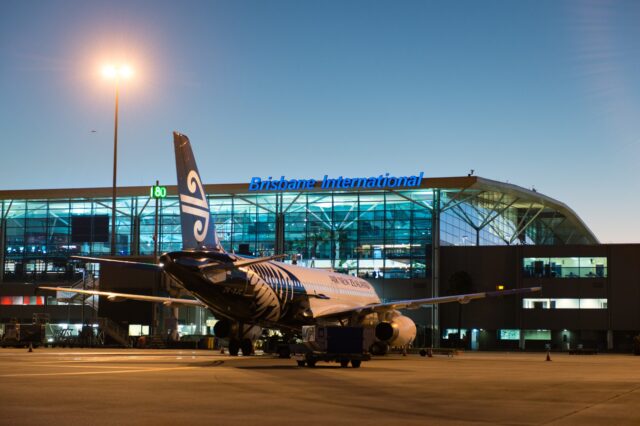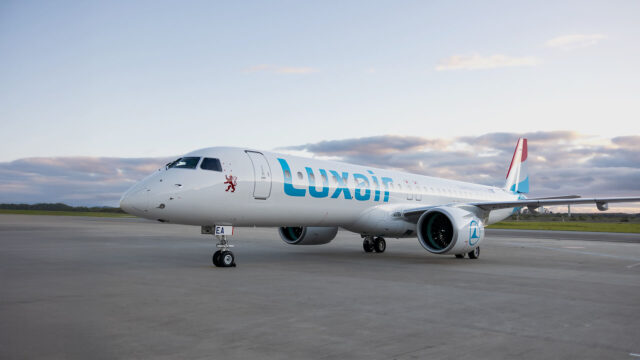Russia builds 1st Yak-130M combat trainer prototype for flight testing

October 13, 2025

Russia is building a modernised combat version of its Yak-130 trainer as it seeks to diversify from only operating frontline fighter jets. The first prototype is now built and ready for testing.
Russia builds modernised combat trainer variant of Yak-130
According to reporting by Russian news outlet Izvestia, Russia’s United Aircraft Corporation (UAC) has completed construction of the first modernised Yak-130M prototype combat trainer aircraft.

The fighter will be able to carry out missions at night and is being equipped with a new BRLS-130R airborne radar station, an optical laser thermal imaging system, modern communications, and the President-S130 defence system.
According to the publication, the modernised prototype is now in the ground and flight test phase, with another two more wings being assembled.
The Yakovlev Yak-130 advanced jet trainer/light combat aircraft was developed in the 1990s and entered service in 2010. It was initially codeveloped with Italy’s Aermacchi, but the two split ways, with Aermacchi going on to develop the Alenia Aermacchi M-346 Master.
🇷🇺In Russia, the first prototype of the Yak-130M trainer-combat aircraft has been built.
— Militarnyi (@militarnyi) October 11, 2025
🔗Learn more details in our video: pic.twitter.com/PfT1LyiEr0
Yakovlev is part of UAC, which is a consolidation of Russia’s aircraft manufacturing companies that includes Sukhoi, Tupolev, Mikoyan, Irkut, and Ilyushin. UAC is owned by Russia’s state-run Rostec State Corporation.
The need for drone-hunter platforms
Prior to the invasion of Ukraine, Russia invested in frontline-fighter jets for its air force and not light fighters. Rostec says the improved Yak-130M will be able to able to carry air-to-air missiles as well as air-to-surface missiles.
The Irkutsk plant has completed assembly of the first Yak-130M (izdeliye 130.14), a new export-oriented combat version of the Yak-130 advanced trainer/LIFT.
— Piotr Butowski (@piotr_butowski) October 10, 2025
A mock-up of the Yak-130M will be exhibited in Dubai next month.https://t.co/5ZITyw9Bb1 pic.twitter.com/avKsHlUexX
One of the lessons learned from the war is the need to have cheaper, slower, and numerous platforms to counter low-moving and numerous drones. That said, it’s also possible Russia is planning to export the upgraded Yak-130M. The US allowed Yak-130 exports to Vietnam despite the CAASTA act, indicating it isn’t too concerned with Russian trainer exports.
While Ukraine is tasking its F-16s to take down Shahed-style drones, ingesting debris is a risk for fast jets, and it seems Ukraine has lost F-16s to that.
"Ivchenko"
— Lee Ann Quann (@AnnQuann) September 14, 2025
Yakovlev Yak-130 "Mitten" advanced jet trainers of Vietnam People Air Force taxiing on the runway before taking to the sky. Vietnam received a total of twelve Mittens from Russia but a non-fatal crash in 2024 reduced the size of the fleet to eleven. pic.twitter.com/DPWpe2CAAv
Both sides have used propeller-driven Yak-52 trainers to counter drone threats, with the passenger carrying a gun to shoot drones down. But this isn’t ideal. Modified helicopters have proven effective, with Ukraine claiming they account for up to 40% of the interceptions in certain sectors.
Russia’s fighter jet production
According to Kyiv Independent, Russia plans to build 57 fighter jets, including Su-57s, Su-35s, Su-34s, and Su-30s. If realised, this would mark a significant increase in the approximately 30 jets Russian industry is estimated to have delivered in 2022, 2023, and 2024.
It is also unclear how many of these jets will be exported to Algeria, Belarus, and Iran, which are three of Russia’s few remaining fighter jet customers.

According to the open-source Oryx blog, Russia is confirmed to have lost (or had damaged) 128 fighter jets since the start of the war. These are due to all causes (including accidents). Excluding ground attack Su-25s and ageing Su-24 bombers, Russia has lost 74 frontline fighters.
While Russian industry appears to be able to replace these direct losses, it is unlikely to be able to keep up with airframes ageing out from wear and tear and obsolescence. Around half of Russia’s tactical fleet (MiG-29s, MiG-31s, Su-24s, Su-27s) is now largely obsolete and mostly relegated to rear echelon duties and border patrols.
Ukrainian forces shot down a Russian Sukhoi Su-35S fighter jet in the Kursk direction on Saturday.
— Status-6 (Military & Conflict News) (@Archer83Able) June 7, 2025
Fighter-bomber claimed that the pilot was rescued. pic.twitter.com/hEpevPAgCK
Russia is also likely unable to replace its considerable strategic bomber losses, including those lost in Operation Spiderweb, and aircraft ageing out from wear and tear.
















